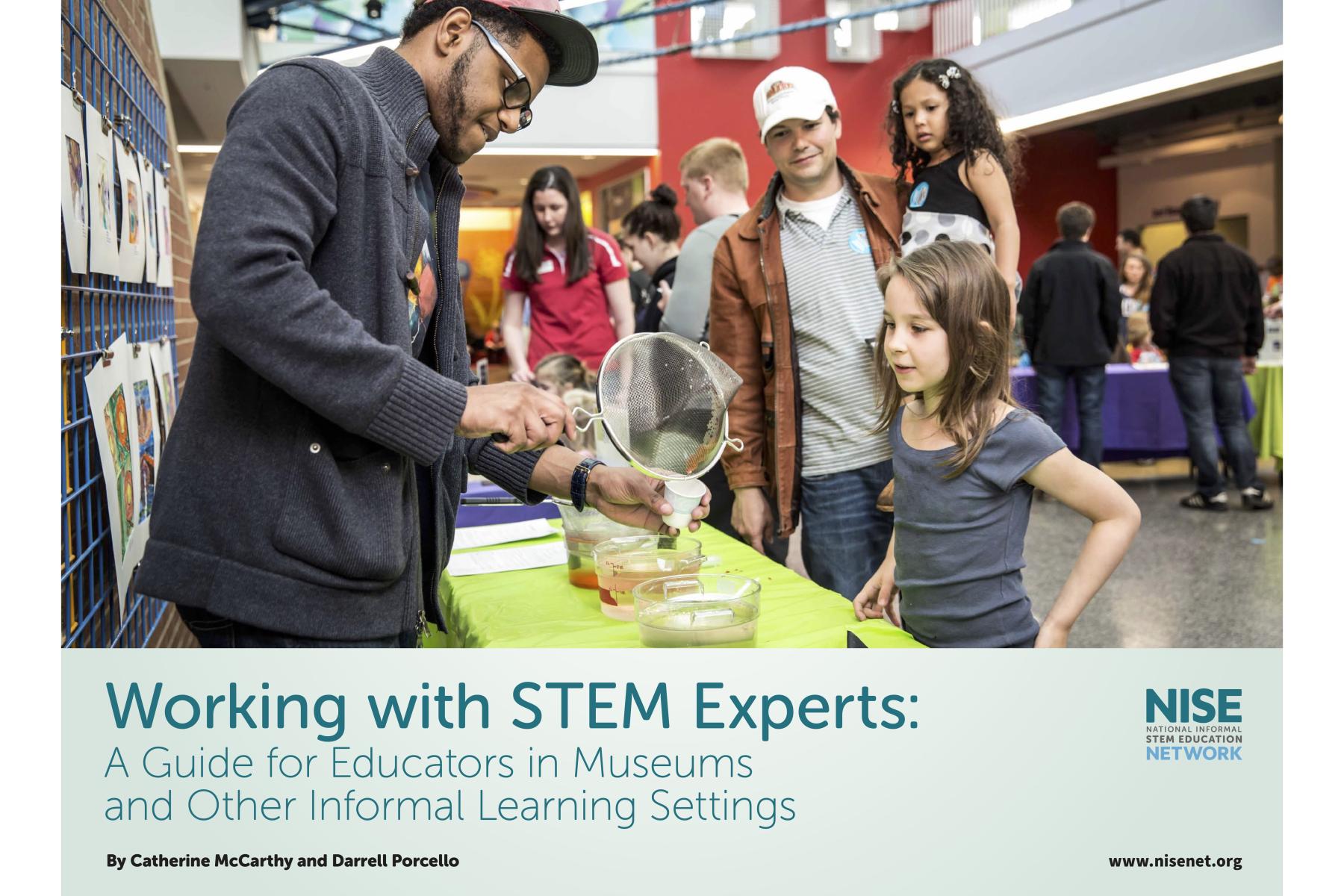DESCRIPTION
The Working with STEM Experts guide is intended to be a practical resource for how to find, prepare, and work with STEM experts. It includes suggestions for ways to involve experts in STEM public engagement programming in informal learning settings.
The guide is written for informal science educator staff and volunteers at museums, science centers, children’s museums, natural history museums, and planetariums. This guide may also be helpful for staff and volunteers at similar informal education institutions such as zoos, aquariums, botanic gardens, nature centers, parks, libraries, festivals, afterschool programs, etc.
Strategies for finding different types of expertise including those with Indigenous knowledge are highlighted in the guide. The guide also includes lists of experts by subject area from colleges and universities, student groups, professional societies, diversity-serving professional societies, local industry professionals, affinity and enthusiast groups, as well as local, state, and federal agencies.
Suggested Citation:
McCarthy, C. and Porcello, D. (2021). Working with STEM Experts: A Guide for Educators in Museums and Other Informal Learning Settings. Tempe, AZ: Arizona State University for the NISE Network. https://www.nisenet.org/working-with-experts
DESCRIPTION
The Working with STEM Experts guide is intended to be a practical resource for how to find, prepare, and work with STEM experts. It includes suggestions for ways to involve experts in STEM public engagement programming in informal learning settings.
The guide is written for informal science educator staff and volunteers at museums, science centers, children’s museums, natural history museums, and planetariums. This guide may also be helpful for staff and volunteers at similar informal education institutions such as zoos, aquariums, botanic gardens, nature centers, parks, libraries, festivals, afterschool programs, etc.
Strategies for finding different types of expertise including those with Indigenous knowledge are highlighted in the guide. The guide also includes lists of experts by subject area from colleges and universities, student groups, professional societies, diversity-serving professional societies, local industry professionals, affinity and enthusiast groups, as well as local, state, and federal agencies.
Suggested Citation:
McCarthy, C. and Porcello, D. (2021). Working with STEM Experts: A Guide for Educators in Museums and Other Informal Learning Settings. Tempe, AZ: Arizona State University for the NISE Network. https://www.nisenet.org/working-with-experts
TRAINING VIDEOS
Credits
Arizona State University
Multiple NISE Network projects contributed towards the content included in this guide:
This guide is based on work supported by the National Science Foundation under Award Numbers 0532536, and 0940143, DRL 1421179, and DRL 1612482. Any opinions, findings, conclusions, or recommendations expressed in this guide are those of the authors and do not necessarily reflect the views of the National Science Foundation.
This guide is based upon work supported by NASA under cooperative agreement award numbers NNX16AC67A and 80NSSC18M0061. Any opinions, findings, and conclusions or recommendations expressed in this material are those of the author(s) and do not necessarily reflect the view of the National Aeronautics and Space Administration (NASA).
This guide is made possible in part by the Institute of Museum and Library Services, Grant Number MG-245910-OMS-20. This program is a continuation of the Sustainability Fellowship program established through support from the Rob and Melani Walton Foundation as part of Arizona State University’s Rob and Melani Walton Sustainability in Science and Technology Museums initiative.
This guide includes materials prepared using federal funds under award NA18SEC0080008 from NOAA. Any opinions, findings, and conclusions expressed in this material are those of the authors and do not necessarily reflect the views of NOAA or the US Department of Commerce.
Creative Commons Attribution Non-Commercial Share Alike 3.0 United States (CC BY-NC-SA 3.0 US).
View more details

NISE Network products are developed through an iterative collaborative process that includes scientific review, peer review, and visitor evaluation in accordance with an inclusive audiences approach. Products are designed to be easily edited and adapted for different audiences under a Creative Commons Attribution Non-Commercial Share Alike license. To learn more, visit our Development Process page.






